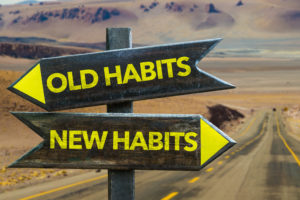Change Management Lesson 3: Improvement requires desire to change
Jan 21, 2020

By Steven Thomson
The Center for Government Innovation
I recently had a check-in conversation with a client. At the end of the conversation, I asked her, “What have you learned about process improvement?” Her response really stuck with me:
“Now I am always asking myself, ‘Is this the most efficient, best way, right way to do this?' I have a tendency to get stuck in my ways. I can be a bit change resistant – it makes me anxious. I used to really live by ‘If it ain't broke, don't fix it.' Now I'm trying to make things better.”
I love this answer for its honesty and how it captures something many people feel. How many of us have been shaped by a work culture that lives by an “If it ain't broke, don't fix it” rule? But what does that really mean?
What does “resistance” to change really mean?

When I get up in the morning, if I put my sock on with a twist, then put on my shoe, I know I have to take my shoe off and fix my sock or I will end up walking on a folded sock all day. That night, I will end up with a blister. As soon as I walk on that folded sock for two minutes, it becomes “normal.” I quit thinking about my foot hurting because I have to eat breakfast, make lunch, get the dog in the car, and start worrying about something at work.
Am I resistant to change? Here “change” would just mean stopping to unlace my shoe, straighten my sock, and put the shoe back on. If I thought about it, I would not mind doing that. But I won't stop then to do it because I have a report to get out or a call to make.
Using the ADKAR model to understand
What is happening here? Let's go back to the ADKAR model – Awareness, Desire, Knowledge, Ability, Reinforcement.
Am I aware of the problem? Yes. But I do not have the desire to change the situation because I have allowed the situation to become normal. It doesn't hurt enough (yet!) for me to prioritize fixing it. This is what the “If it ain't broke, don't fix it” rule obscures.

Thinking about what really needs fixed
The paradoxical truth is that everything we do is in some way “broken” already. Could this work be done more consistently? Could that person be served faster? Put in these terms, there is always room to improve everything.

At the same time, I can't try to improve everything I'm doing every single day. My co-workers and I couldn't keep things straight. To stay sane, I must accept some processes as “good enough for now.” The problem is, with time and repetition, they just become “not broken, ” a habit I don't have to think about. I quit seeing how they could be better, and I lose the desire to improve them. Desire, then, is about motivation. Once we have built Awareness of the situation, we need to get a whole group of people who agree that we no longer accept this situation as “normal” and commit to finding a better way.

Manage your expectations
Managers and supervisors should expect some employees to resist change in their work routines. Maybe someone who says, “I'm too busy to contribute” or “I'm just not sure this is an important enough problem to work on.” What they might not be saying is more along the lines of “Making this change could put me out of a job” or “I'm afraid that fixing this situation will make my work life worse.” Because the change is viewed as a threat instead of an opportunity, fear – the opposite of desire – drives their behavior.
Expect some emotional reactions

Now is the time to use your “crucial conversations” training and have a heart-to-heart. Emotional reactions are signals that you've touched something deeply important. The speaker might not have even thought through or be able to express what they fear. Have they been given a safe place to express their fears? Is there too much change already going on in the organization? Has change been unsuccessful in the past? Doubts are OK – they have to be because they are part of being human.
Be open to hearing the truth
So have a conversation. How can your team member take control of their situation by actively engaging in the change? What can you do as their peer or leader to support and reassure them? Is something in their personal life – a child struggling in school, a parent with a health crisis – taking up all their reserves? People can take on only so much at a time, so the desire part of change management might be about making the change manageable in the world of a few key employees.
Be curious, be open and be persistent
In other words, being “resistant to change” is not a fixed personality characteristic. It doesn't help to say “Alex is resistant to change,” throw up your hands, and walk away. Resistance to change is a call to engage. Employees need to be able to say “I not only understand the need for the change but I have a positive role to play, I have some control in my own work and life, and I have something to gain. I'm motivated to support and participate in the change.”Desire is simply that moment when the people who need to change all agree “This just isn't working anymore, and we must change.”

